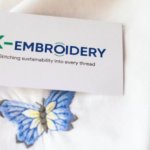Vietnamese brocade: The quintessence of handmade textiles
Brocade is a precious heritage, representing the quintessence of traditional Vietnamese handicraft textiles. Not only in Vietnam, but around the world, brocade is also considered a unique and creative cultural symbol.
The difference between brocade and digitally woven fabrics is the uniqueness of each product. Each piece of brocade is a crystallization of the artisan’s enthusiasm, meticulousness and creativity, containing the unique cultural and spiritual values of each ethnic minority in Vietnam. Over thousands of years of history, brocade still retains its value and strong vitality, contributing to embellish the colorful cultural picture of Vietnam.
Quintessence of Vietnamese brocade
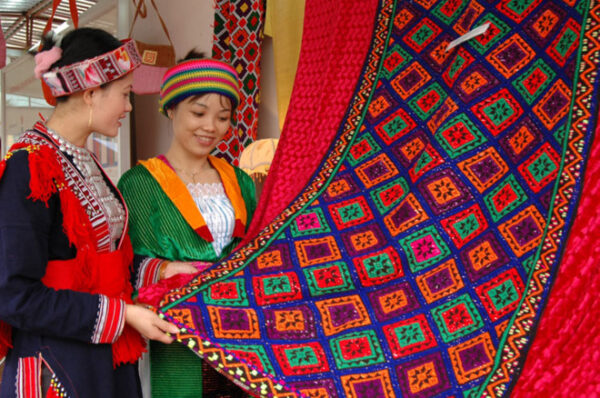
Brocade is not simply a fabric, but also a symbol of the cultural and spiritual life of ethnic minorities. Each region and each ethnic group has unique weaving techniques and brocade patterns, expressing their own characteristics in culture and customs.
To create a complete brocade product, the artisan must go through many stages that require meticulousness and skill. From choosing raw materials, spinning yarn, dyeing, weaving to finishing the product, everything is done manually.
The beauty of brocade is expressed through its diversity in colors, patterns and motifs. Each pattern has its own meaning, expressing the aesthetic concepts, beliefs and spiritual life of that ethnic group.
For example, in the Hmong tradition, girls from adolescence began to strip linen to make yarn, dye it, weave fabric, and even sew. Brocade fabric is used to make costumes such as dresses, scarves, and loincloths. Fabric is also used to make blankets and bedsheets. They show the ingenuity and are the dowry of a Hmong girl when she returns to her husband’s house.
Later, when tourism developed, brocade was often used as a material for souvenir items such as backpacks, handbags, tablecloths, coasters, etc. Handmade brocade weaving techniques created brocade panels. fabric with delicate and unique beauty. Bright colors, diverse and sophisticated patterns are outstanding features of brocade.
The brocade weaving material is mainly raw cotton and linen combined with natural dyes. Thanks to that, brocade not only brings aesthetic beauty but is also safe for the health of users.
Each ethnic minority has its own unique weaving techniques and brocade patterns. Brocade patterns often reflect the living environment, cultural life and spirit of the people there. For example, the dragon and phoenix pattern represents the wish for prosperity and luck; Floral patterns show connection with nature; Beeswax patterns represent community solidarity…
With the development of tourism, brocade promises to become a unique cultural beauty, contributing to attracting tourists and promoting Vietnam’s image to the world.
Each ethnic minority has its own unique way of weaving
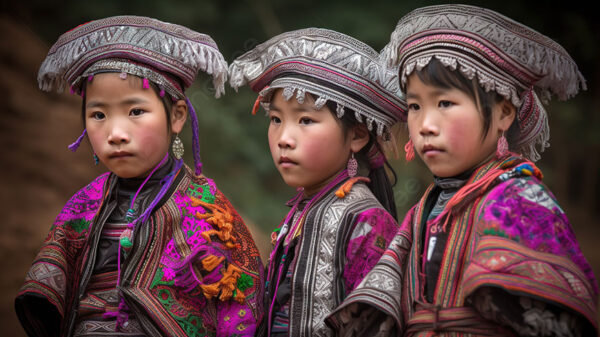
- H’Mong people: H’Mong brocade is famous for its delicate embroidery techniques, using cross, diamond, triangle,…
- Dao people: Most Dao people dye brocade fabric bright red. Bright brocade fabrics embroidered with dark blue patterns look very elegant.
- Tay people: The special feature of Tay brocade fabric is the arrangement of dark diamond-shaped patterns on a white background.
- Nung people: Nung people often wear colorful costumes, especially the color of the sleeves and tail is different from the body of the shirt.
- Khmer people: Khmer brocade weaving technique is to create patterns directly on the fabric right after weaving.
- Cham people: Cham brocade is dark or red in color, decorated with geometric patterns.
- H’Re people: H’Re brocade is dyed red and black with geometric motifs forming consecutive cells, straight lines and wavy lines.
- Bana people: The main colors of Bana brocade are black, red and white. Patterns are often simple geometric motifs, woven using traditional techniques.
- Lo Lo people: Lo Lo people use the patchwork technique of colorful fabric patterns with clear layouts on a black fabric background.
- Thai people: Northwestern Thai brocade uses main colors such as white, red, yellow, green, purple,… to create a visual impression. Symmetrical patterns reflect the universe, yin and yang philosophy,…
The dyes used are from natural ingredients
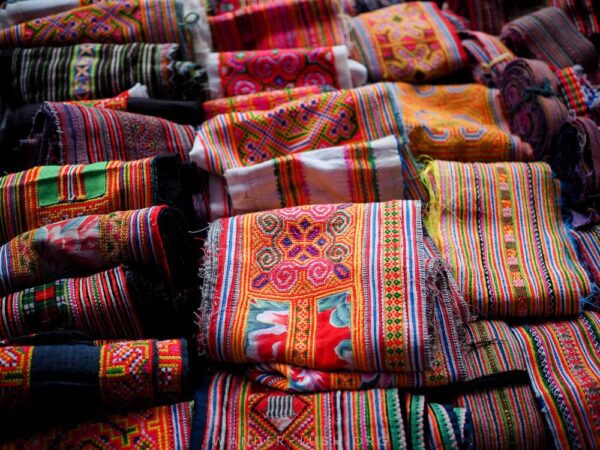
Brocade fabric is dyed with completely natural ingredients.
- Black: Mixture of indigo leaves or dark green leaves soaked with fresh mud.
- Purple: Purple cabbage, beetroot.
- Blue: Grilled shells of snails living in streams mixed with clear lime water, Krum leaves or indigo leaves.
- Red: Ancient Krung tree.
- Reddish brown: Boiled mixture of tree bark, vinegar and alum. Textile fibers are dyed at a temperature of 800ºC.
- Yellow: Turmeric or powerful mineral powder from the soil.
What is the role of brocade in the fashion industry’s sustainable development trend?
Currently, fashion designers are very fond of brocade. In Vietnam, the first person to put brocade on fashion costumes and ao dai in domestic and international shows is designer Minh Hanh. Next is Si Hoang, a designer whose ao dai brand has won many domestic and international awards since 1989. I had the opportunity to talk with him about the bright potential of the brocade textile industry.
Designer Si Hoang believes that introducing brocade material into high-end fashion designs is a potential direction and promises to bring great success. With current fashion trends, fashionistas increasingly prefer unique outfits that express their own personality. Brocade, with its diversity in patterns, textures and colors, is a great tool to meet this need.
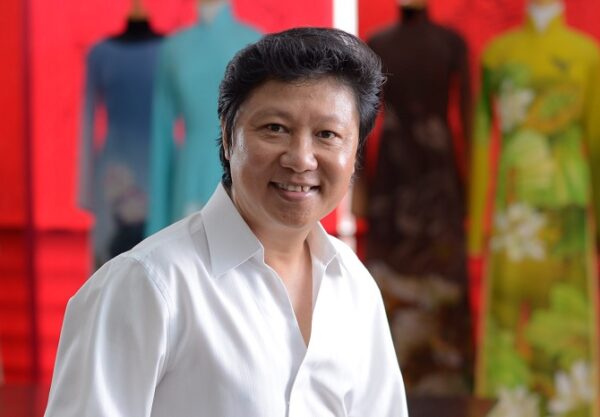
“Brocade patterns are extremely unique. Each fashion product made from brocade is unique. 100 dresses of the Chinese H’Mong people, no two are alike. Each dress represents each girl’s personality and craftsmanship.”
“The whole world is pursuing sustainable fashion trends. Brocade materials are all woven from natural fibers. The dye color is also natural. An outfit made from natural fibers only takes a few months to decompose in the soil. Besides, after decomposition, they do not affect the environment but also bring benefits to the soil. That is the strength when the fashion industry takes advantage of the strengths of this fabric.”
Seeing the potential of brocade fabric is not only beneficial in the field of fashion. It also contributes to solving global problems: the environment, climate, consumer trends, health… by supporting the slow fashion trend and not using dyes that are harmful to the environment.
Besides being used in high-end fashion, brocade patterns can also be applied in graphic designs and used in home decoration such as on ceramic vases, carpets, tea cups, etc.
Designer Si Hoang emphasized: “Brocade patterns “show off” the craftsmanship of the craftsman. The cultural treasures of 54 ethnic groups are like a door opening up interesting discoveries that will never end”.
What is the potential of brocade material?
Brocade beauty is a unique cultural heritage that should be preserved and promoted. Recognizing this importance, many localities have implemented measures to restore and develop brocade weaving in ethnic communities.
In fact, most Vietnamese brocade products are woven by the talented hands of the H’Mong ethnic people, especially craftsmen in Ha Giang, Bac Ha and the Central Highlands ethnic groups. To support people in developing traditional weaving, some localities have implemented preferential loan policies and organized vocational training classes to improve brocade weaving skills, especially for the younger generation.
The biggest difficulty today is that the product does not have a stable output and only serves tourism. To preserve and promote the economic and cultural value of Vietnamese brocade weaving, there needs to be more supportive policies on market and product promotion.
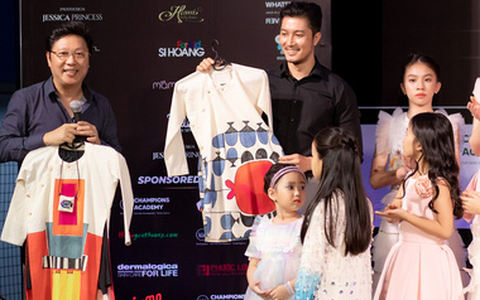
Designer Si Hoang once participated in Sakura Collection, a fashion design competition in Japan. The event brings together designers across Asia. The products bear the mark of each country’s culture, but are all made on kimono fabric. He said: “If Vietnamese brocade is included in major fashion design competitions, this material will come closer to the world.”
Preserving traditional brocade weaving not only preserves national cultural values, but also contributes to local socio-economic development. Besides, the fashion industry today honors indigenous cultural elements. Exploiting brocade is an opportunity to open the door to the international market for Vietnamese designers.
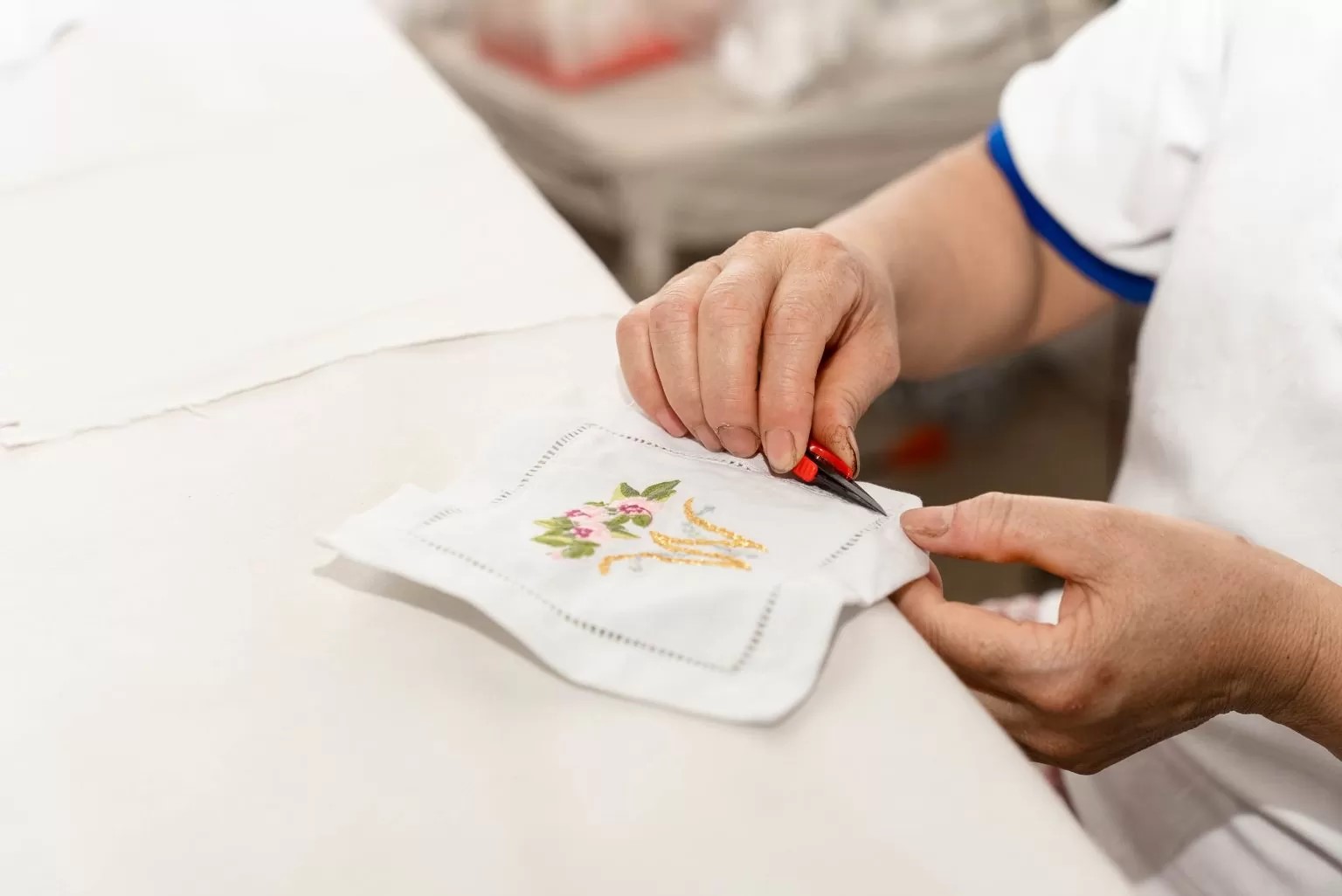 |
K-Embroidery is one of the largest embroidery factories in Vietnam. We are a professional manufacturer, with outstanding products in hand embroidery, hand smocking,… especially children’s clothing products, meeting STANDARD 100 by OEKO-TEX® standards. If you are interested in our services, you can learn more at: About Us, Catalog,… |

